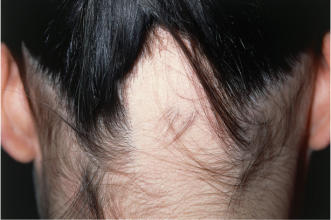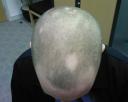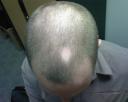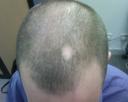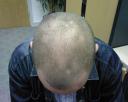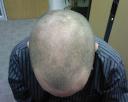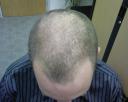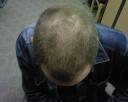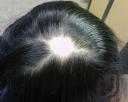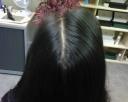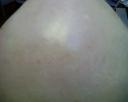What Are The Symptoms Of Alopecia Areata?
09.05.2008 in ALOPECIA AREATA, UncategorizedThe typical pattern is for one or more bald patches to appear on the scalp. These tend to be round in shape, and about the size of a large coin. They develop quite quickly. A relative, friend, or hairdresser may be the first person to notice the bald patch or patches. Apart from the bald patch or patches, the scalp usually looks healthy and there is no scarring. Occasionally, there is some mild redness, mild scaling, mild burning, or a slight itchy feeling on the bald patches.
When a bald patch first develops, it is difficult to predict how it will progress. The following are the main ways it may progress.
Quite often the bald patch or patches re-grow hair within a few months. If hair grows back it may not have its usual colour at first and looks grey or white for a while. The usual colour eventually returns after several months.
Sometimes one or more bald patches develop a few weeks after the first one. Sometimes the first bald patch is re-growing hair whilst a new bald patch is developing. It can then appear as if small bald patches rotate around different areas of the scalp over time.
Sometimes several small bald patches develop and merge into a larger bald area.
Patches of body hair, beard, eyebrows, or eyelashes may be affected in some cases.
Large bald patches develop in some people. Some people lose all their scalp hair. This is called alopecia totalis.
In a small number of cases, all scalp hair, body hair, beard, eyebrows, and eyelashes are lost. This is called alopecia universalis.
The nails are affected in about 1 in 5 cases and can become pitted or ridged.
Some people become self-conscious, anxious or distressed by the appearance of the hair loss.
Do you have Hair Loss Problems, read our Hair Loss Help





